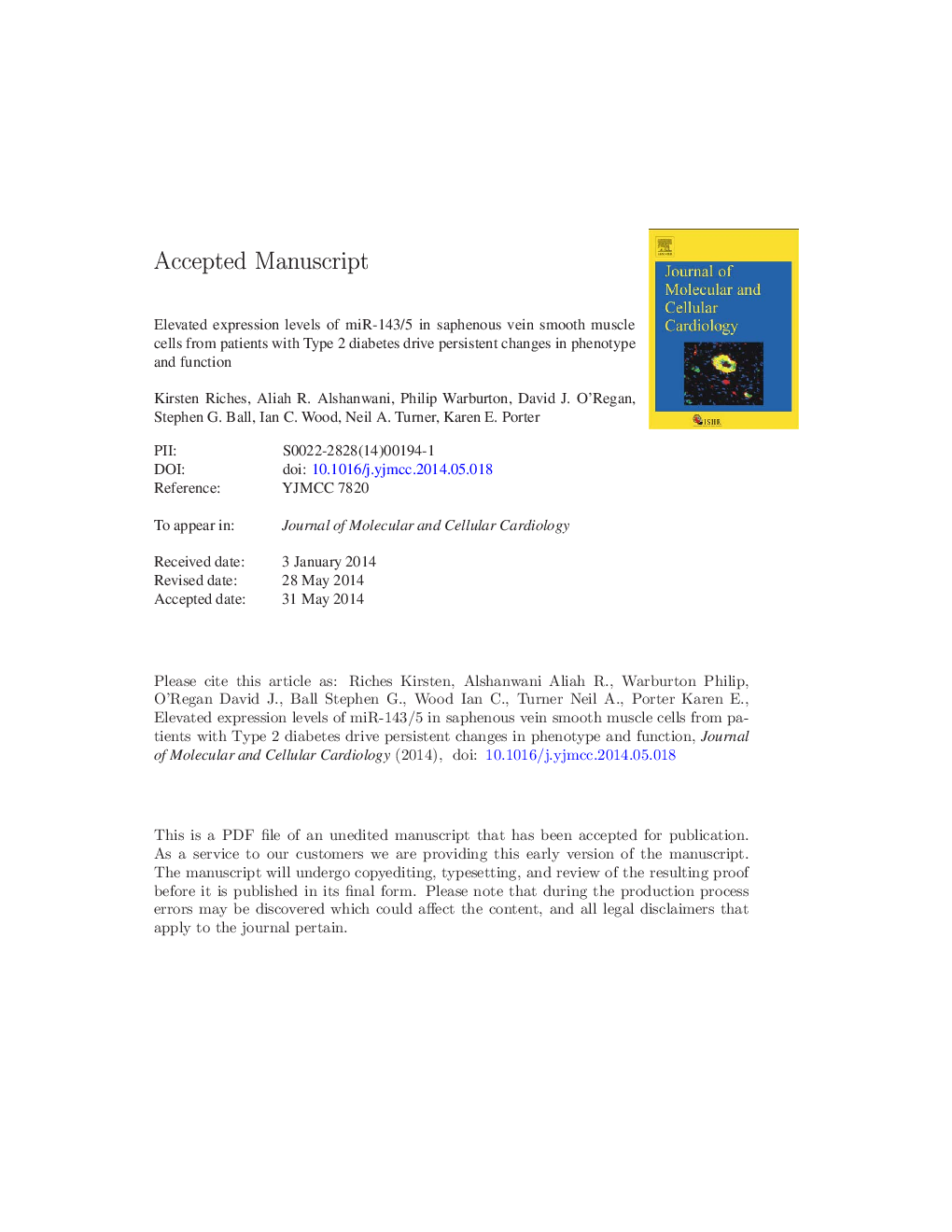| Article ID | Journal | Published Year | Pages | File Type |
|---|---|---|---|---|
| 8474755 | Journal of Molecular and Cellular Cardiology | 2014 | 24 Pages |
Abstract
Type 2 diabetes (T2DM) promotes premature atherosclerosis and inferior prognosis after arterial reconstruction. Vascular smooth muscle cells (SMC) respond to patho/physiological stimuli, switching between quiescent contractile and activated synthetic phenotypes under the control of microRNAs (miRs) that regulate multiple genes critical to SMC plasticity. The importance of miRs to SMC function specifically in T2DM is unknown. This study was performed to evaluate phenotype and function in SMC cultured from non-diabetic and T2DM patients, to explore any aberrancies and investigate underlying mechanisms. Saphenous vein SMC cultured from T2DM patients (T2DM-SMC) exhibited increased spread cell area, disorganised cytoskeleton and impaired proliferation relative to cells from non-diabetic patients (ND-SMC), accompanied by a persistent, selective up-regulation of miR-143 and miR-145. Transfection of premiR-143/145 into ND-SMC induced morphological and functional characteristics similar to native T2DM-SMC; modulating miR-143/145 targets Kruppel-like factor 4, alpha smooth muscle actin and myosin VI. Conversely, transfection of antimiR-143/145 into T2DM-SMC conferred characteristics of the ND phenotype. Exposure of ND-SMC to transforming growth factor beta (TGFβ) induced a diabetes-like phenotype; elevated miR-143/145, increased cell area and reduced proliferation. Furthermore, these effects were dependent on miR-143/145. In conclusion, aberrant expression of miR-143/145 induces a distinct saphenous vein SMC phenotype that may contribute to vascular complications in patients with T2DM, and is potentially amenable to therapeutic manipulation.
Related Topics
Life Sciences
Biochemistry, Genetics and Molecular Biology
Cell Biology
Authors
Kirsten Riches, Aliah R. Alshanwani, Philip Warburton, David J. O'Regan, Stephen G. Ball, Ian C. Wood, Neil A. Turner, Karen E. Porter,
